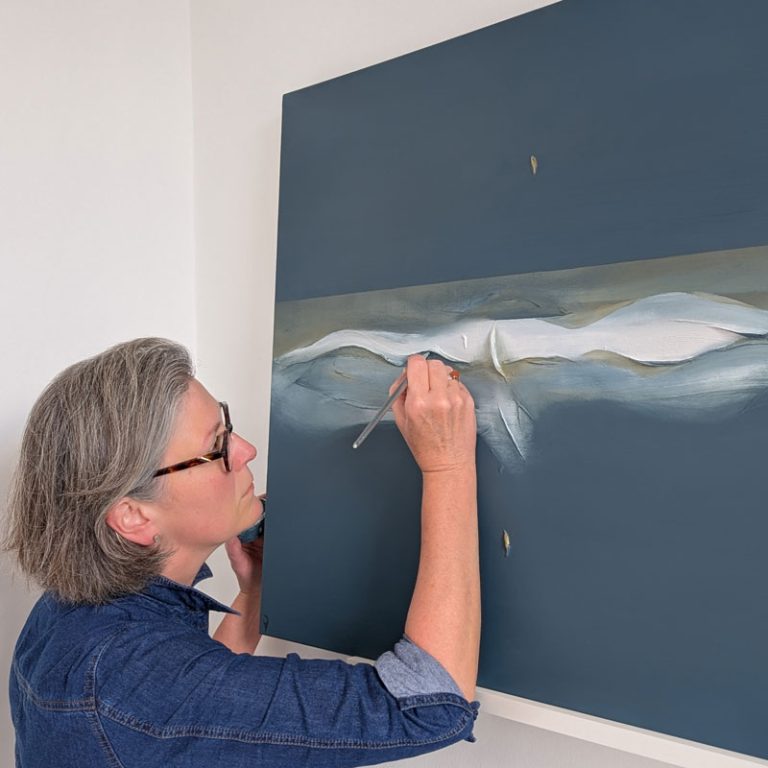
In February 2025 I was commissioned to paint a piece of art for a therapy practice in London. After talking through a number of themes with my customer, I came up with a brief to explore the theme of the shadow self. The intention was to create a painting that would help clients sit with their feelings long enough to experience and examine them.
In undertaking this brief, I thought the best way through was to look at my own shadow. I began to journal daily, which helped me form the narrative and structure of the painting. I wanted to explore what type of painting would allow me, and others, to open up to this type of work.
These are some of my journal entries
Is our shadow something to be healed or simply understood?
Shadows are only revealed in light, which suggests we can only know them when illuminated.
Perhaps we use shadows as a place to project guilt.
If life’s aim is to become lighter, then exposing our shadows can help transform them.
Shadow and light coexist; the shadow may be a spectrum of vibrations, with light as the highest vibration.
It seems to me that it is not possible to understand the shadow independently, as the shadow could be just another aspect of the same source as light.
Choosing the right colours
Putting my journal entries into shape and colour felt instinctive, and I chose to work with blue as the dominant colour. I created a grounding, warm mid-blue paint for this piece, with an element of gold. Blue is considered to be a rational colour that boosts focus, energy, and feelings of safety. Scientific evidence also shows it can help lower body temperature. From a psychological perspective, gold symbolises positivity, hope, and transformation.
I wanted to create a rich texture through the centre of the painting to tell the story, a story the observer will complete. The blue paint above and below this textured ‘line’ offers an emotional ‘resting place’ for the observer. The small textured gold ‘notes’ above and below the line point to ‘Two Sides of the Same Shadow.’
The gold and white tones within the textured ‘line’ is where I imagine the dialogue begins. It’s here where the painting becomes itself, when the observer brings their story to it, and something happens in the middle.

